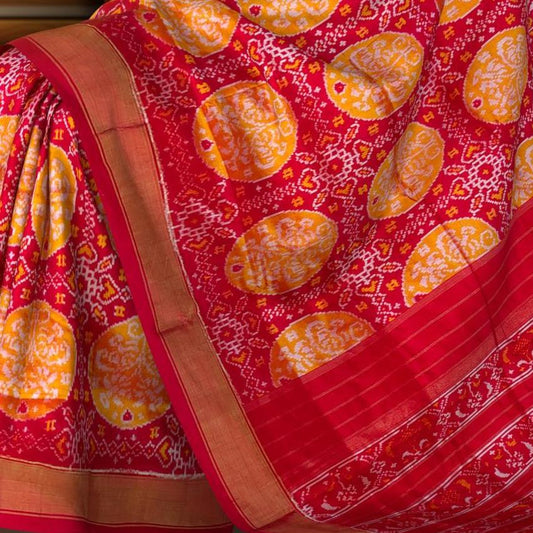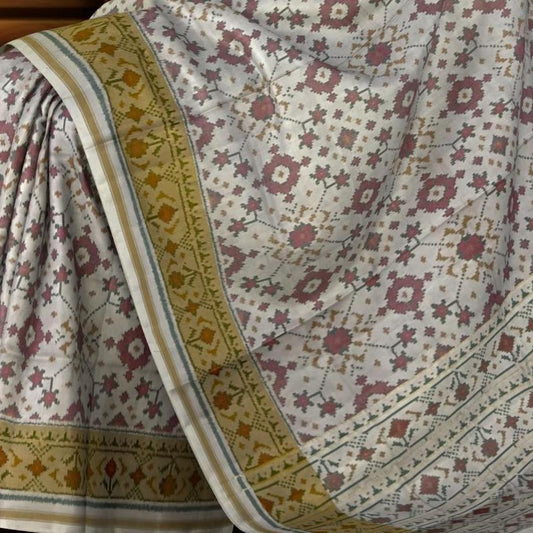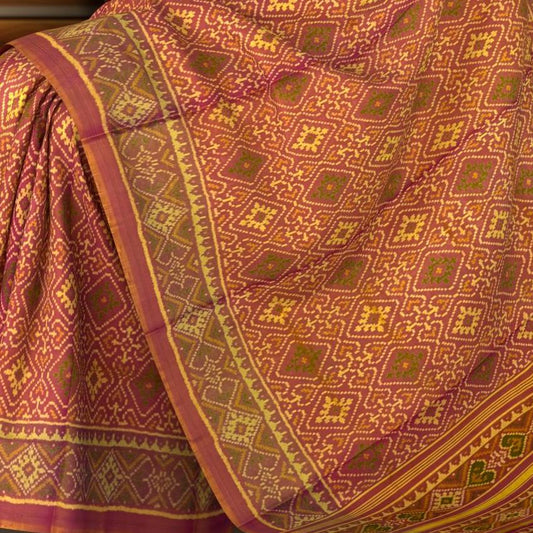How to Clean a Kanjivaram Silk Saree: Washing, Dry Cleaning, and Other Methods
Kanjivaram silk sarees are known for their rich texture, vibrant colors, and intricate designs. These traditional sarees, woven with pure mulberry silk and interwoven with gold and silver threads, are not just garments—they are heirlooms that often carry emotional and cultural significance. However, maintaining the beauty and longevity of these sarees requires special care, especially when it comes to cleaning.
In this guide, we will explore the best methods for cleaning your Kanjivaram silk saree, including washing, dry cleaning, and other important techniques. Whether you want to remove stains or freshen up your saree, this comprehensive guide will ensure your treasured saree remains as beautiful as the day you bought it.
Why Proper Care for Kanjivaram Silk Sarees Is Important
Silk is a delicate fabric, and Kanjivaram silk, with its ornate designs and zari (metallic thread) work, requires meticulous care. Improper cleaning can result in faded colors, damaged fabric, or tarnished zari. Understanding how to clean your saree correctly will preserve its elegance and shine for years to come.
Let’s dive into the different cleaning methods for Kanjivaram silk sarees.
1. When to Choose Dry Cleaning
One of the safest methods for cleaning a Kanjivaram silk saree is professional dry cleaning. This method is recommended, especially for sarees with heavy zari work or those that haven’t been washed in a long time. Here’s why:
Benefits of Dry Cleaning:
- Preservation of Fabric and Zari: Dry cleaning uses solvents rather than water, which helps in preventing the zari from losing its shine or color from fading.
- Expert Care: Professional cleaners know how to handle delicate fabrics like silk, ensuring your saree gets cleaned without damage.
- Safe for Heavily Embroidered Sarees: If your saree has intricate designs, dry cleaning is the safest bet to avoid damage to the embellishments.
When to Dry Clean:
- After every 2-3 wears if the saree has a lot of zari work.
- After major festivals, weddings, or events where the saree might have been exposed to dust, makeup, or sweat.
2. How to Hand Wash a Kanjivaram Silk Saree
While dry cleaning is recommended, there are situations where hand washing your saree might be necessary or preferred. If your saree has light work and no heavy embroidery, you can wash it at home by following these steps:
Step-by-Step Guide to Hand Washing:
-
Use Cold Water: Always use cold water for washing silk sarees. Hot water can weaken the fibers and cause the colors to bleed.
-
Mild Detergent: Choose a mild, silk-friendly detergent or baby shampoo. Harsh chemicals can damage the delicate silk fibers and tarnish the zari.
-
Pre-Soaking: Soak the saree in cold water with a little detergent for no more than 5 minutes. Do not rub the fabric vigorously.
-
Gently Wash: After soaking, gently wash the saree using your hands, paying attention to any stains. Do not wring or twist the fabric, as this can stretch and damage it.
-
Rinsing: Rinse thoroughly with cold water until the detergent is completely washed out.
-
Final Rinse with Vinegar: Add a few drops of vinegar to the final rinse water. This helps in preserving the sheen of the silk and removes any detergent residue.
-
Drying: Never wring the saree. Instead, let the water drip off naturally. To dry, lay the saree flat on a clean surface away from direct sunlight, which can cause the colors to fade. Avoid hanging the saree as it can stretch the silk fibers.
Important Tips for Hand Washing:
- Always wash the saree separately to prevent color bleeding onto other fabrics.
- Avoid scrubbing or brushing the saree, as this can damage both the silk and zari.
- Use soft towels to press out excess water if needed.
3. Dealing with Stains on a Kanjivaram Silk Saree
Accidental spills are inevitable, but dealing with them promptly and correctly can save your saree from permanent damage. Here’s how to manage some common stains on Kanjivaram silk sarees:
Oil Stains:
- Sprinkle talcum powder or cornflour on the stain to absorb the oil. Let it sit for a few hours before gently brushing it off.
Food Stains:
- Blot the stain immediately with a clean, dry cloth. Then, dab the area with cold water. Avoid rubbing, as it can spread the stain. Take it to a professional cleaner if necessary.
Ink Stains:
- Dab the area gently with a cotton ball soaked in rubbing alcohol. Always test on a small, hidden area first to ensure it won’t damage the saree.
General Tips for Stain Removal:
- Act quickly before the stain sets.
- Avoid using any harsh chemicals, as they can weaken the silk fibers and cause color loss.
- If in doubt, consult a professional cleaner.
4. Storage Tips for Kanjivaram Silk Sarees
Cleaning is only one part of maintaining your Kanjivaram saree. Proper storage is equally important to ensure the saree remains in pristine condition.
Key Storage Tips:
- Wrap in Cotton or Muslin Cloth: Avoid plastic bags for storage, as they can trap moisture and damage the fabric. Cotton or muslin allows the silk to breathe.
- Use Naphthalene Balls or Neem Leaves: To prevent moth damage, place naphthalene balls or neem leaves inside the storage box, but ensure they don’t come into direct contact with the saree.
- Refold Regularly: Silk is prone to creasing. To avoid permanent creases, refold the saree every few months.
- Avoid Direct Sunlight: Prolonged exposure to sunlight can fade the colors. Store the saree in a cool, dark place.
5. Air Your Saree Regularly
Airing your Kanjivaram silk saree from time to time prevents any musty smells and helps maintain its freshness. Here’s how you can do it:
- Hang in Shade: Once every 2-3 months, hang your saree in the shade for a few hours to allow it to breathe.
- Avoid Direct Sunlight: Sunlight can weaken the silk fibers and fade the vibrant colors.
Conclusion
Kanjivaram silk sarees are a treasured part of India’s rich cultural heritage, and maintaining their beauty requires proper care. Whether you choose dry cleaning, hand washing, or need to address stains, following the right techniques ensures that your saree remains as magnificent as ever. With the right care, you can pass down these precious sarees to future generations, keeping the tradition and elegance of Kanjivaram silk alive.
Remember, when in doubt, always seek professional help to avoid any accidental damage to your precious saree. Proper care, cleaning, and storage will keep your Kanjivaram saree looking pristine for years to come.







Leave a comment
Please note, comments need to be approved before they are published.